Recommendation: Start with the sapsan high-speed train to connect Moscow and St. Petersburg in under four hours, then book a cheaper room in a central hostel to maximize your time at iconic places and museums.
Plan your route through destinations that balance history and value. In each city, pick two top destinations and a single museum to visit with timed tickets, then fill the rest with free walks along river embankments and markets. This kind of planning keeps stress low while showcasing local vibes.
When moving between cities, consider flights with pobeda for longer hops; you can often find price ranges that stay under 5,000 RUB one-way if you book weeks ahead. A room in a budget guesthouse keeps your daily spend under control, especially in smaller night markets and quiet streets.
Walk where you can; feet carry you between sights, and you can substitute pricey tours with free options. thinking through a two-city loop–Moscow first, then St. Petersburg–helps you test a plan with minimal risk; if a turned budget option appears, switch to it without losing momentum and save the price ceiling for later destinations.
Night stays matter: choose apart hotels or budget room shares near metro lines, and book early to lock in price stability. This approach keeps you close to places you want to revisit and makes destinations feel reachable without overspending.
Ready to explore the lighter side of Russia? Start with this approach and map a two-city sample: Moscow to St. Petersburg by sapsan, then add pobeda flights to a second destinations cluster. Keep your room prices under control and turn an affordable plan into real discoveries.
Realistic budgeting for a Russia trip: city costs, seasonality, and practical limits
Start with planning a two-city loop around Moscow and St. Petersburg, a city on the Neva. Set a daily target of 60-90 USD in off-peak months, and 90-130 USD in peak season to cover hotel, meals, and local travel, giving you more flexibility and a clear path between destinations.
Hotel options vary by city. In smaller towns you can find low-cost hostels or guesthouses for 15-25 USD per night. In Moscow or St. Petersburg, dorm beds run 20-40 USD, private rooms 40-100 USD, and budget hotels 60-120 USD in peak season. For example, a compact private room in a central district might cost around 70-90 USD in summer, while the same room could drop to 50-70 USD in winter.
Meals and dining: plan breakfasts and casual lunches around 8-15 USD, dinners 15-25 USD, and occasional splurges on a dinner with opera seats. If you eat where locals eat, you cover more without overpaying in tourist zones. Museums range 5-15 USD per ticket for city museums; the larger sights can be 15-25 USD. Opera tickets vary widely; consider weekday matinees or balcony seats to save.
Transport between destinations: trains stay the simplest and most comfortable option. Book domestic trains well in advance to snag lower fares; night trains can save a hotel night. Between Moscow and St. Petersburg, expect 25-60 USD for daytime seats or 40-80 USD for a sleeper. For other routes stop in Kazan or Nizhny Novgorod; fares hover 15-40 USD when booked ahead. As an alternative to trains, flights exist, but costs and transfers add up, so plan carefully. Between city centers, trains stop you close to the heart of each destination, avoiding extra taxi time.
Seasonality and pacing affect value: in frozen months hotel rates and transport can soften, while summer brings festivals and higher prices. If you hold a flexible schedule over a month, spread days between destinations and add nearby towns to balance crowds and discover hidden gems. Free river walks, cathedrals, and museums offer worthwhile options on slower days, helping you enjoy the Neva banks and golden domes without overspending.
Intended for a traveller balancing costs: discounts for childrens on museum tickets and some domestic routes apply, so ask at the desk for family rates where available. If you travel with a companion, sharing a hotel room reduces costs, and you might stop more often in smaller towns to keep each day varied. By keeping a close eye on dine-out vs. market meals and choosing trains over short flights, you become steadier in budgeting and more confident in planning future trips.
Example two-week plan: first five days in Moscow, next six in St. Petersburg, plus a couple of day trips to nearby towns along the Neva’s delta. Lodging near 65 USD on average per night, meals around 30-40 USD per day, and train legs between cities 30-60 USD each. Museums typically add 10-20 USD per person, so total costs stay within a practical range for a realistic traveller budget without sacrificing highlights or comfort.
Daily budget benchmarks by city and season
Book hostels two weeks ahead in Moscow during winter to keep daily spend around 3000 RUB.
Moscow – winter: lodging 800–1200; meals 600–1000; transport 300–500; admission 600–900; daily total 2300–3600 RUB. Summer: lodging 1000–1800; meals 700–1100; transport 300–500; admission 600–900; daily total 2600–4300 RUB. Tram passes offer cheap daily transport; homemade dinners cut costs; Pobeda flights to reach the city keep the trip accessible. (источник)
St. Petersburg – winter: lodging 700–1300; meals 600–1000; transport 300–500; admission 500–800; daily total 2100–3600 RUB. Summer: lodging 1100–1900; meals 700–1100; transport 300–500; admission 600–900; daily total 2700–4300 RUB. Use tram lines to curb transport costs; view-rich museums deliver good experiences for a fair price; available discounts make the trip more affordable.
Sochi – winter: lodging 1200–1900; meals 700–1100; transport 400–700; admission 600–900; daily total 2900–4600 RUB. Summer: lodging 1800–3200; meals 900–1400; transport 500–800; admission 700–1000; daily total 4800–6400 RUB. Tamping transport costs with a smart plan helps; homemade breakfasts and dinners cut costs; snow-season hikes add value to the visit.
Kazan – winter: lodging 900–1400; meals 650–1000; transport 300–500; admission 500–800; daily total 2350–3500 RUB. Summer: lodging 1100–1700; meals 700–1100; transport 300–500; admission 600–900; daily total 2700–4200 RUB. Museums offer solid value; tickets available at box offices; you can book ahead to secure cheap hotels; you would save if you use river view spots to relax after a day. country tourism is active here; just know that street food and homemade snacks help cut costs.
Yekaterinburg – winter: lodging 900–1500; meals 650–1000; transport 300–500; admission 500–800; daily total 2300–3800 RUB. Summer: lodging 1200–2000; meals 750–1100; transport 300–500; admission 600–900; daily total 2900–4500 RUB. This city offers a mix of parks, galleries, and a view of the river; be mindful of free sights to keep costs friendly and plan affordable experiences.
Novosibirsk – winter: lodging 800–1300; meals 600–900; transport 300–500; admission 500–800; daily total 2200–3500 RUB. Summer: lodging 1000–1700; meals 700–1100; transport 300–500; admission 600–900; daily total 2600–4200 RUB. Museums and markets provide good value; источник shows cheap options; plan homemade snacks and book ahead to lock prices.
Vladivostok – winter: lodging 1000–1600; meals 700–1100; transport 500–700; admission 500–800; daily total 2600–4200 RUB. Summer: lodging 1400–2300; meals 800–1300; transport 500–700; admission 700–1000; daily total 3400–5300 RUB. The port area offers affordable view and experiences; use the tram and public buses to keep costs down; Pobeda connections can help access regional hubs in the country.
Money-saving transport strategies: trains, buses, and metro passes
Buy a multi-day metro pass in each city you visit and activate it on day one to cut transport costs significantly. These low-cost passes include unlimited rides on metro and city buses, cover attractions like museums and the kremlin area, and help you stay within a comfortable budget while exploring the neva river banks. If you travel with a plan, you can separate days for suburban trips and city-center strolls, making it easy to keep a steady pace during weekdays. As you become familiar with city layouts, you gain room in your budget for extra treats and photo stops.
For trains, book advance and choose slower regional services when possible to save money while still seeing the scenery. The average fare drops significantly if you pick trains midweek and off-peak times. If you need to reach distant destinations, a combination of trains and occasional private car transfers can reduce stress; look for coupons or bundled offers that rail companies provide. Between cities with famous landmarks like kremlin or by the neva, fast trains save time, while slower options deepen the experience of small towns and upriver views. To balance speed and price, consider a flexible rail pass if you plan several legs and avoid expensive options on peak days.
Buses offer the lowest-cost option for longer hops and for reaching destinations not served by rail. They typically cost less than trains and you can save by packing lunch to avoid extra stops. Weekdays mid-morning departures often have lower fares; use coupons or apps to compare routes that serve river towns and private small destinations along the neva or other rivers. If you must go far, compare with flights to avoid a long road or rail segment; sometimes a budget flight plus a short train leg beats a long bus ride. Prices vary apart from peak hours, so check off-peak windows and weekend options.
| Transport | Typical cost | Best use | Tips |
|---|---|---|---|
| Metro passes | 3–4 days: ~1,000–2,000 rubles; 7 days: ~2,000–3,500 rubles | Urban cores; attractions around kremlin and neva area; museums | Buy in advance; load on card; look for coupons; weekdays can be lighter crowds |
| Trains (intercity) | Regional: ~500–2,500 rubles; fast intercity: ~2,000–5,000 rubles (depends on distance) | Destinations between cities; scenic routes in small towns | Compare slow vs fast options; book ahead; consider a rail pass if you travel several legs |
| Buses (long-distance) | ~500–2,000 rubles depending on distance | Low-cost hops; break up longer routes; reach destinations not served by rail | Check luggage rules; use coupons; travel on weekdays when possible |
Advance planning pays off. Look for combined tickets that cover transport and key attractions, and pack light to keep your options flexible as you move from city to city and along the neva river, visiting museums and other hotspots while keeping the budget modest.
Where to stay on a budget: hostels, guesthouses, and apartment rentals
Choose a centrally located hostel with a private room or a guesthouse; this keeps travel times short and lets you hit dining spots quickly.
-
Yekaterinburg
- Typical cost: dorm beds 900–1500 RUB per night, private rooms 2500–4500 RUB, apartment rentals 3500–8000 RUB.
- Best areas: central districts near the subway and bus stops for easy transit and a short stop-off to venues along the city center and the river.
- Tips: pick places with a kitchen to cook, solid laundry facilities, and a rating 8.5+ on major platforms; many venues update deals across the season.
- Deals: some hosts offer discounts for two or more nights, and monthly rates are common if you plan to stay longer; a simple rule is to book early to lock in the best price.
-
Moscow
- Typical costs: dorm beds 1200–2000 RUB per night, private rooms 5000–9000 RUB, apartment rentals 7000–15000 RUB.
- Best districts, including Taganskaya and nearby neighborhoods, provide fast transit connections and access to dining streets.
- Tips: read guest reviews for safety and cleanliness; choose places with soundproofed bedrooms and kitchens; prefer options with direct metro access.
- Deals: seasonal promos and longer stays yield the most savings; birthday bonus options can appear on booking platforms, so inquire when you book.
-
Saint Petersburg
- Typical costs: dorm beds 1000–1800 RUB per night, private rooms 3500–7000 RUB, apartment rentals 5000–12000 RUB.
- Best areas: near the Neva River and metro lines for quick transit to museums and dining venues; a pleasant stop-off after evening activities.
- Tips: prioritize a place with a shared kitchen and washing machine; look for monthly rates if plans span several weeks; aim for a rating 8.5+.
- Deals: bundles with transit passes or dining vouchers can cut costs; bring a few cans of beverages for evenings and save on snacks.
Across the country, budget stays hinge on location, room type, and length of stay, including in the three destinations listed above.
When you book early, you secure better room options and save money on night rates. A practical guide helps you compare ratings, proximity to subway lines, and the availability of kitchens; this experience ensures you pick venues that match your money goals and your itinerary.
Affordable meals and grocery tips: eating well without overspending
Shop at a local market and cook simply in your accommodation or apart to trim meals by half. In Moscow, fresh bread, cheese, yogurt and seasonal vegetables come at a fraction of restaurant prices, and you’ll still enjoy light, satisfying dishes.
Choose a plan that blends groceries with occasional dining out. Visit a market within walking distance each morning, pick 2–3 staples, and rotate recipes so nothing goes to waste. Focus on shelf-stable items like grains, canned fish, and vegetables that cook quickly after a stop-off at your hotel or apartment.
For ready-to-eat options, head to casual venues near metro stations that show you value. Many venues near theaters and opera houses offer budget options on weekdays, like soup-and-salad combos or hearty dumplings, that are much cheaper than full dinners.
When you dine out with a small group, split two light dishes to sample more flavors without inflating the bill; if service charge is not clearly stated, ask before ordering. Prefer simple, well-prepared dishes that locals enjoy, such as borscht, pelmeni, and fresh salads.
Weekdays are worth planning as your stop-off for cheaper meals. Some venues offer fixed-price lunch menus or early-evening sets; pair those with a quick museum or theater visit to maximize your experiences within a single trip.
To save on groceries, buy in bulk at larger markets when you can store items safely, and plan meals around what’s in season. If you stay in a hotel with a kitchenette, you can portion meals and reuse leftovers, saving every day. Make a simple grocery list and stick to it to prevent impulse buys. People who travel on a budget will appreciate how a simple plan keeps meals balanced.
Locals share the best budget options: small markets, family-run bakeries, and quick-service stalls that serve dishes you can enjoy without overspending. By combining those with a few groceries, you’ll sample authentic tastes and keep your budget in check, together with fellow travelers and hosts.
Visa, insurance, and hidden costs: planning upfront expenditures
Plan visa and insurance 6–8 weeks ahead to lock prices and avoid rush fees. youll compare options for a standard tourist visa versus an e-visa if eligible, and decide whether to use a private agency or official channel to keep costs predictable.
- Visa: upfront planning and realistic budgeting
Total outlay usually falls in the 12,000–28,000 rubles range (about 150–350 USD), depending on the method. The Russian consulate fee is typically 35–80 EUR, and agency service charges vary from 20–100 USD. An invitation or voucher can add 0–50 USD, while expedited processing adds a premium. If yous travel to the capital and nearby stations for a tight schedule, you may save by bundling visa and invitation with a single supplier; such a package helps you avoid surprises reported by other travelers.
How to tighten the timeline: gather passport scans, photos, flight details, and hotel bookings early; check whether your trip qualifies for an e-visa and confirm which regions allow it. If you wont qualify for e-visa, book through a reputable provider and request a written itemized estimate to prevent hidden fees.
- Insurance: coverage, cost, and requirements
Buy a travel policy with Russian medical coverage of at least 30,000–50,000 EUR and emergency support. Expect to spend roughly 2–5 USD per day for a basic plan; a two-week trip often lands around 28–70 USD in premiums, depending on age and add-ons. Look for 24/7 assistance, hospital network access, and no-excess cases. Youll appreciate a plan that covers repatriation and private clinics in larger stations like Moscow and St. Petersburg, with an option to extend if you plan a side trip to Vladimir or other regional towns.
- Hidden upfront costs to budget
- Transit between stations: long-distance rail or bus between cities may cost 500–1,200 rubles for a basic seat; private compartments run higher. If you book ahead, you can secure a reasonable seat and avoid last-minute price spikes.
- Accommodation options: dorm beds commonly range from 600–1,000 rubles per night; private rooms run 1,200–2,600 rubles, with the capital sometimes higher. For longer stays, look for alternative options like furnished flats or homestays to reduce per-night costs.
- Food and daily meals: inexpensive canteens offer lunches for 150–350 rubles; dinners range 350–700 rubles. Homemade meals or groceries can cut daily spend, and you can add fresh basils or herbs to keep flavor without overspending.
- Entertainment and sightseeing: museum combo tickets and city tours save versus single-entry prices. Many venues publish coupons or student discounts; check official sites for free hours on certain days. Budget 500–1,000 rubles per day for activities if you want a balanced schedule without sticker shock.
- Connectivity and card fees: SIM cards cost 300–700 rubles with data plans; some shops levy small service fees for card payments. Expect occasional supplementary charges if you rely on taxis or private transfers late at night.
- Medical and incidental costs: carry a small emergency fund for minor incidents, especially if you plan side trips to towns like Vladimir. A few hours in a clinic can add up; insurance helps keep these expenses predictable.
- Smart strategies to reduce risk and improve value
Book early where possible and compare prices across providers. Use official booking portals rather than opaque third-party sites when you can; this reduces reported discrepancies and surprises. Look for coupons from hostel networks, dining apps, or museum partnerships to stretch your budget. If you want free entertainment options, align your itinerary with museum free-entry days and public hours for exhibits.
- Sample plan: a compact, budget-conscious itinerary
Base in Moscow (capital) with a one-day excursion to Vladimir. Reserve a dorm bed on arrival, then upgrade to a private room if a two-week stay turns long. Allocate rubles for local trains between stations, meals in canteens, and a couple of entertainment options. Use a bundled visa-and-insurance package if available, and carry a small emergency fund in rubles and a card with international usage to avoid ATM fees. With careful planning, you’ll manage russian rubles efficiently and keep your overall budget within the expected range.

 The Tourist Side of Russia – A Budget Traveller’s View">
The Tourist Side of Russia – A Budget Traveller’s View">

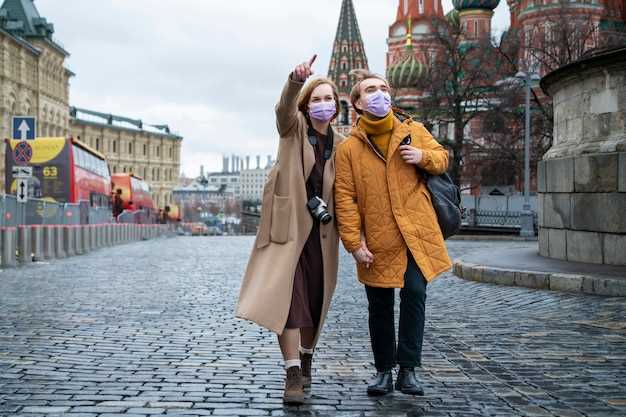
 Best Ethnic Restaurants in Moscow – A Local Guide to Global Flavors">
Best Ethnic Restaurants in Moscow – A Local Guide to Global Flavors">
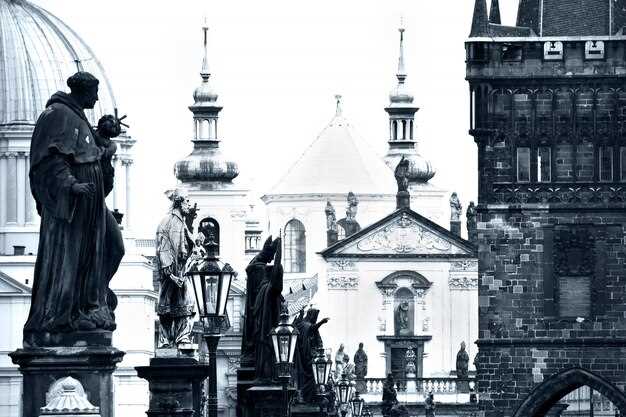 Religion and Culture in Moscow – Spiritual Traditions and City Life">
Religion and Culture in Moscow – Spiritual Traditions and City Life">
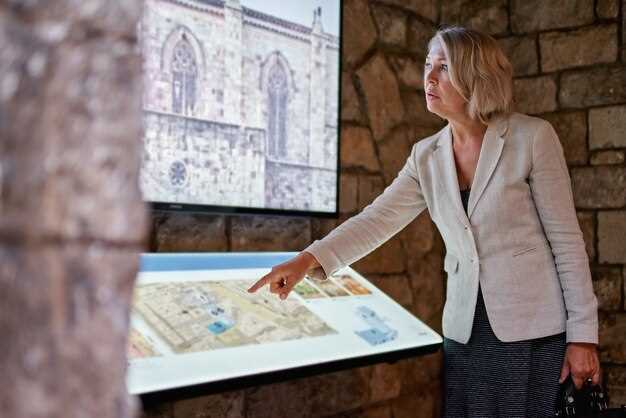 Discover Moscow Design Museum – A Comprehensive Guide to Russia’s Premier Design Destination">
Discover Moscow Design Museum – A Comprehensive Guide to Russia’s Premier Design Destination">
 Tula – The Best Getaway from Moscow – Photos">
Tula – The Best Getaway from Moscow – Photos">
 Moscow in Winter – A Fulfilling Guide to Enjoy a Snow Holiday">
Moscow in Winter – A Fulfilling Guide to Enjoy a Snow Holiday">
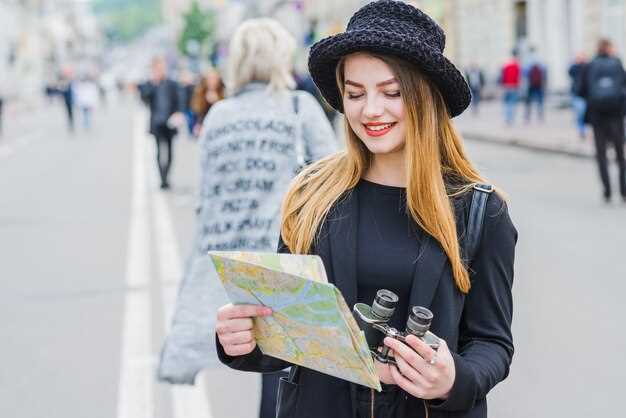 Moscow Highlights – A 5-Day Itinerary to Top Sights and Experiences">
Moscow Highlights – A 5-Day Itinerary to Top Sights and Experiences">
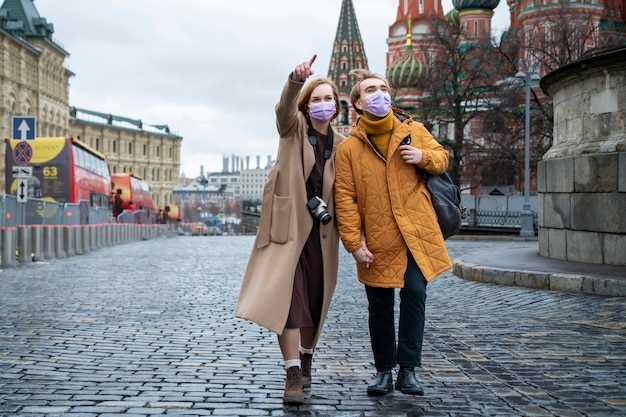 Half-Day Guided Tour of Sergiev Posad Monastery – Moscow Day Trip">
Half-Day Guided Tour of Sergiev Posad Monastery – Moscow Day Trip">
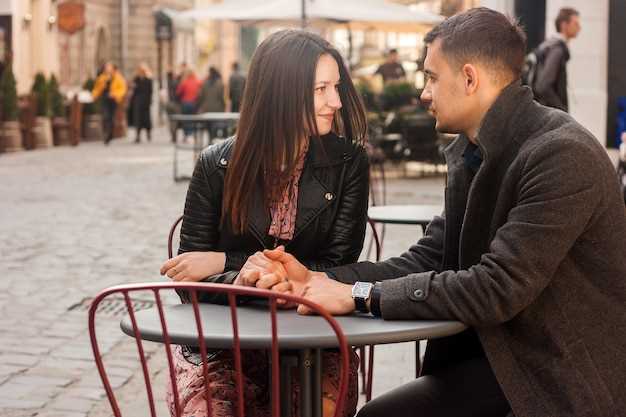 Top 5 Casual Moscow Date Ideas for Couples to Explore and Connect">
Top 5 Casual Moscow Date Ideas for Couples to Explore and Connect">
 Relaxing Weekend in Moscow – A Calm Guide to Parks, Cafes, and Culture">
Relaxing Weekend in Moscow – A Calm Guide to Parks, Cafes, and Culture">
 Smart Tourism in Moscow – Apps and Digital Tools for Modern Travelers">
Smart Tourism in Moscow – Apps and Digital Tools for Modern Travelers">